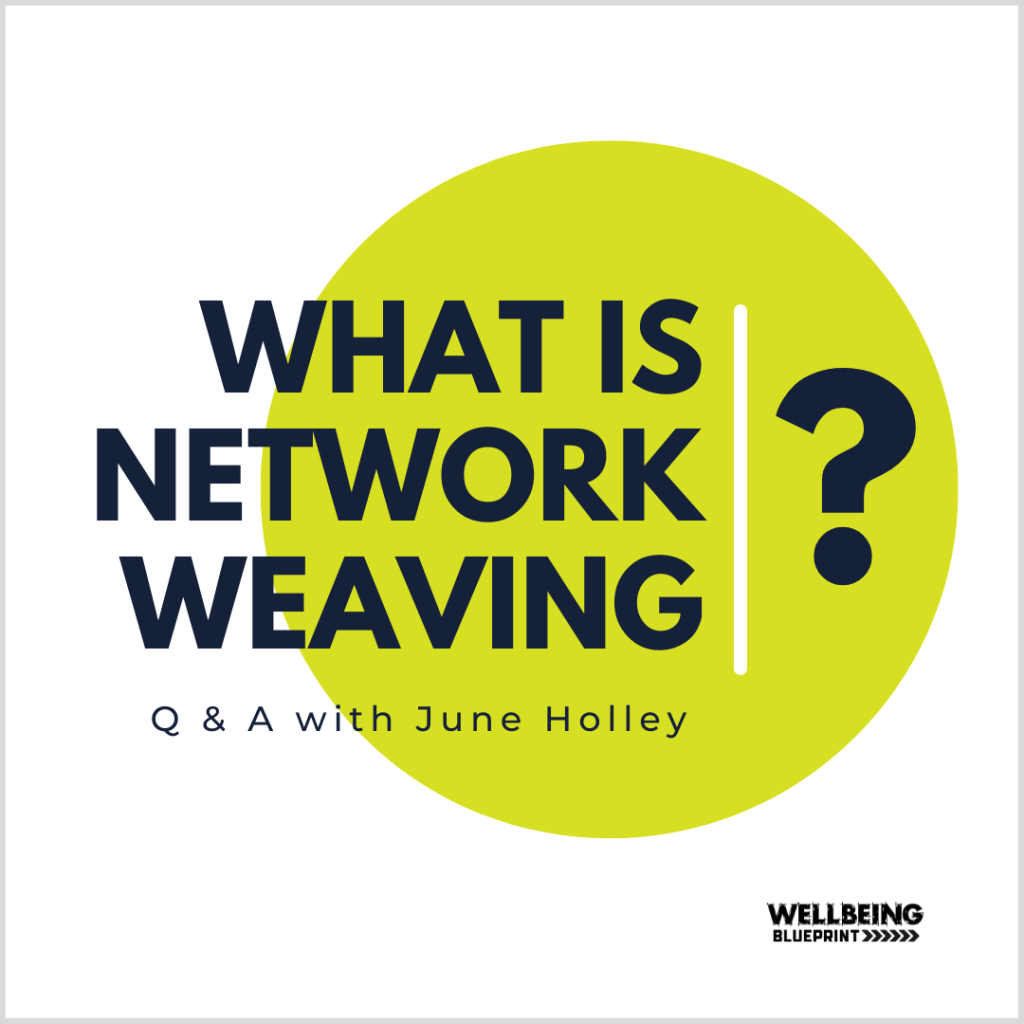June Holley is a Wellbeing Blueprint signer who has been weaving networks, helping others weave networks and writing about networks for over 40 years. We recently sat down with June to define network weaving and help us understand how it can be a game changer in building our collective capacity to bring about social change.
Q: What is network weaving?
A: Network weaving is something that we all do. It’s paying attention to the relationships around you and noticing who’s missing, who’s not being listened to, and helping create healthier, deeper relationships. You do this by bringing new people in, by connecting people within your existing networks, and helping them get to know each other so they can work together.
Q: What is the difference between networking and network weaving?
A: When people think of networking, they think of passing out business cards to people at a conference and selling themselves. So networking is all about yourself. But when you move to network weaving, it’s about the community. It’s about the people around you and helping them build a network that can be capable of support and action. It’s a pretty different thing.
Q: What does network weaving have to do with building a country where everyone has a fair shot at wellbeing?
A: The concept of wellbeing is really complex and there are a lot of pieces to it. It might be about health access, it might be about creating a safe community. But before people can begin to work and co-create these kinds of things in their community, they need to know each other deeply. They need to be able to trust each other so they can work together. Working on the network and relationships is about creating the foundation, the fertile ground, on which aspects of wellbeing can emerge. So the more time you invest in building relationships, the easier it will be to work together on wellbeing.
Q: What’s one thing someone can do to start network weaving?
A: One of my favorites that you can do at every meeting you have is called speed networking. It’s a way to help people either get to know people that don’t know each other, or help to deepen relationships.
It goes like this: you ask people to stand up and find somebody they don’t know or don’t know well. And then you give them a juicy question like, “What’s keeping you up at night?” Or “What’s something about yourself that not many people know?” And you give them about five minutes to talk back and forth. Then you have the group come back together to debrief. You can ask them what made their partner a good listener. People will list things like eye contact, nodding, asking good questions, feeling really heard, etc.
Now that the group has established some guidelines for good listening, you ask everyone to pay attention to their listening skills in the second round. Then you give them another question, they go off and talk to somebody different this time. After the group reconvenes, everyone can share out the difference they noticed during this round. Often people will say they noticed themselves being a better listener and getting more out of the conversation.
There are lots of very easy, small things that you can do to interact with people in new ways that are much healthier and lead to much more effective and interesting actions.
Learn More
- For tools, resources and events, visit dev.networkweaver.com.
- For an introduction to June’s thinking around network weaving, check out her collection of posts on Medium.
- To ask questions and connect with a community, join the Network Weaving Facebook group.
You can also download a pdf with a link to this interview to save to your personal library by visiting the Network Weaver Resource Page.
Originally published at Wellbeing Blueprint
Network Weaver is dedicated to offering free content to all – in support of equity, justice and transformation for all.
We appreciate your support!
donate in the box above or click here

